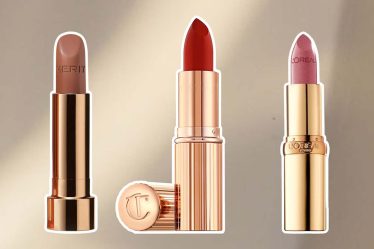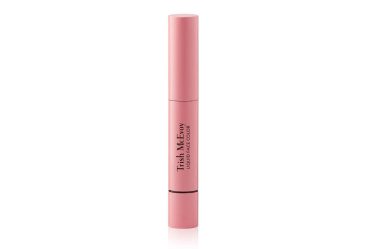
Proper storage and preservation are crucial for maintaining the effectiveness and safety of your cosmetics. With the right practices, you can extend the life of your products and ensure they continue to perform at their best.
Foundation
Shelf Life: Liquid foundations typically last 6 to 12 months after opening. This can vary based on the presence of preservatives and formulation specifics. Foundations with SPF may have a shorter shelf life due to the degradation of the sunscreen ingredients. Powder foundations can be effective for up to 2 years due to their lower water content, which limits bacterial growth.
Storage Method:
- Temperature Control: Keep foundations in a cool, dry place away from direct sunlight and extreme temperatures. Heat and humidity can alter the texture and color of the product.
- Cap Security: Always ensure the cap is tightly closed to prevent bacterial contamination and product dehydration.
- Avoiding Contamination: Avoid transferring the product between containers to prevent contamination.
- Clean Tools: Use clean brushes or sponges to apply foundation to avoid introducing bacteria into the product.
Additional Tip: If your foundation starts to separate, has an off smell, or changes texture, it’s best to discard it, even if it’s not past its expiration date. Changes in texture or smell can indicate potential degradation of the product. Regularly clean application tools to maintain product integrity.
Mascara
Shelf Life: Mascara generally lasts 3 to 6 months due to its liquid formula and applicator. Exposure to air can lead to bacterial growth and product drying. Waterproof mascaras can last slightly longer but should still be replaced within 6 months.
Storage Method:
- Temperature and Humidity: Store mascara in a cool, dry place. Heat and humidity can cause the formula to break down more quickly.
- Cap Security: Keep the tube tightly closed to prevent drying out.
- Application Technique: Avoid pumping the brush in and out of the tube, as this introduces air and accelerates drying.
- Cleanliness: Clean the rim of the tube with a clean cloth to avoid bacteria buildup.
Additional Tip: Do not share your mascara with others, as this can spread eye infections. If the mascara becomes clumpy or sticky, it’s time to replace it. Consider using disposable mascara wands if you need to share the product.
Eyeshadows
Shelf Life: Powder eyeshadows can last up to 2 years due to their low water content, which limits bacterial growth. Cream eyeshadows, which contain more water, should be used within 6 to 12 months to avoid microbial growth.
Storage Method:
- Temperature and Humidity: Store eyeshadows in a cool, dry place. Heat and humidity can cause the product to become clumpy or hard.
- Cap Security: Ensure palettes or pots are tightly closed to prevent moisture and dust accumulation.
- Airtight Storage for Creams: Cream eyeshadows should be kept in airtight containers to prevent drying.
- Clean Tools: Regularly clean brushes and applicators to prevent cross-contamination.
Additional Tip: If your eyeshadows change color, become dry, or develop clumps, it’s best to discard them. Changes in texture or odor can indicate product degradation. Consider using eyeshadow primers to extend the wear and life of your eyeshadows.

Lipsticks
Shelf Life: Lipsticks typically last 1 to 2 years, depending on their formulation (matte, creamy, gloss). Formulas with natural oils may degrade faster. Lip glosses generally have a shorter shelf life, around 6 to 12 months, due to their higher water content.
Storage Method:
- Temperature Control: Store lipsticks in a cool, dry place to prevent melting or stickiness. Extreme temperatures can cause the product to sweat or separate.
- Cap Security: Always keep the cap tightly closed to avoid contamination.
- Cleanliness: Clean the lipstick bullet regularly with a clean cloth to remove bacteria.
- Application Method: Avoid using a lipstick if its smell or texture changes.
Additional Tip: To extend the life of your lipstick, use a lip brush instead of applying directly from the bullet. This reduces the risk of contamination and prolongs the product’s shelf life. Regularly exfoliate your lips to maintain a smooth application.
Blush and Bronzer
Shelf Life: Powder blushes and bronzers can last up to 2 years, while cream versions should be used within 6 to 12 months to prevent bacterial growth.
Storage Method:
- Temperature and Humidity: Keep blushes and bronzers in a cool, dry place. Heat and humidity can cause the product to harden or develop a film.
- Cap Security: Ensure compacts are tightly closed to avoid moisture and contamination.
- Clean Tools: Regularly clean brushes and applicators to maintain hygiene.
Additional Tip: If your blush or bronzer shows signs of mold or discoloration, it’s best to discard it. Changes in texture or odor also indicate that the product may be expired. Consider using a setting spray to extend the wear of your blush and bronzer.
Eyeliners
Shelf Life: Liquid eyeliners last 3 to 6 months due to their aqueous formula, while pencil eyeliners can last up to 2 years. Gel eyeliners fall somewhere in between, typically lasting around 6 to 12 months.
Storage Method:
- Temperature and Humidity: Store eyeliners in a cool, dry place. For pencil eyeliners, sharpen regularly to maintain a clean application and avoid infections.
- Cap Security: Keep liquid eyeliners tightly closed to prevent them from drying out.
- Clean Tools: For gel eyeliners, ensure the brush is cleaned regularly to avoid bacterial buildup.
Additional Tip: Replace eyeliners that become dry, gritty, or develop an unpleasant odor. Avoid sharing eyeliners to minimize the risk of contamination. Use a primer to enhance the longevity of your eyeliner.
Skincare Products (e.g., Serums, Moisturizers)
Shelf Life: Skincare products vary widely in shelf life, ranging from 6 months to 2 years, depending on active ingredients and formulation. Products containing sensitive actives like Vitamin C or retinol have a shorter shelf life.
Storage Method:
- Temperature and Light Control: Store skincare products in a cool, dry place away from direct light and temperature fluctuations. Avoid storing products in the bathroom where humidity is high.
- Application Method: Use a spatula or clean spoon to extract the product to prevent contamination.
- Special Storage: For products with sensitive ingredients, such as retinol or Vitamin C serums, consider storing them in the refrigerator to extend their efficacy.
Additional Tip: Always check expiration dates and use products before they become ineffective or cause irritation. If a product changes color, smell, or texture, it may be time to discard it. Patch test new skincare products to avoid adverse reactions.

Knowing the shelf life and proper storage methods for your cosmetics is essential for maintaining their effectiveness and ensuring safety. As a responsible beauty enthusiast, always check expiration dates and follow recommended storage practices. By adhering to these simple tips, you can enjoy your favorite cosmetics while maintaining a healthy and safe beauty routine.
Additional Tip: Store cosmetics in drawers or cool, stable-temperature areas to prevent alterations due to heat fluctuations. Also, avoid leaving products exposed to open air to reduce contamination risk and extend their lifespan.


